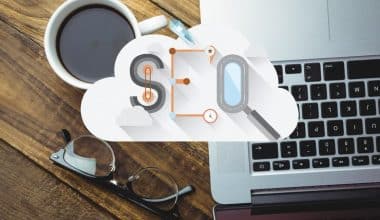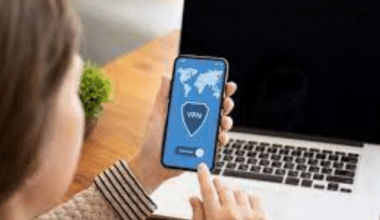Social media has become so intertwined with our daily lives that it has revolutionized the way we communicate, share information, and connect with others. However, a pertinent question arises: Is social media truly a force for good or bad? Does it do more harm than good? In this thought-provoking article, we will delve into the pros and cons of social media, examining both its positive and negative aspects. By exploring the multifaceted impacts of social interactive platforms on our lives, relationships, and society as a whole, we aim to shed light on the complex nature of this digital phenomenon.
Social media platforms have had profound effects on various aspects of society, and these effects can be both positive and negative. Below are considerations from both perspectives;
Below are some of the positive aspects of social interactive platforms in the society;
#1. Connectivity and Communication
Social media platforms have connected people from around the world, facilitating communication and fostering global connections. It enables individuals to stay connected with friends, family, and communities, regardless of geographical distances.
#2. Information Sharing and Awareness
Social media has played a significant role in disseminating news and information and raising awareness about various social issues. It has facilitated the rapid spread of information, allowing individuals to stay informed about current events and participate in discussions and movements.
#3. Empowerment and Activism
Social media has provided a platform for marginalized communities and individuals to have their voices heard, share their stories, and advocate for social justice. It has facilitated the organization of protests, campaigns, and charitable initiatives, leading to increased awareness and mobilization for important causes.
The following are some of the negative aspects of social interactive platforms;
#1. Spread of Misinformation and Fake News
Social media platforms have been criticized for enabling the rapid dissemination of misinformation, conspiracy theories, and fake news. This can contribute to a fragmented information landscape, polarization, and confusion, impacting public discourse and decision-making.
#2. Cyberbullying and Online Harassment
Social media platforms can be breeding grounds for cyberbullying, online harassment, and hate speech. These negative interactions can have severe psychological and emotional impacts on individuals and contribute to a toxic online environment.
#3. Privacy and Security Concerns
Because social interactive platforms usually collect vast amounts of personal data, incidents of data breaches, identity theft, and misuse of personal information have underscored the risks associated with social media usage.
- Connectivity and Communication
- Information Sharing and Awareness
- Networking and Professional Opportunities
The exact answer to this question depends on your usage and needs. Whether or not it is better to be on social interactive platforms is subjective and depends on individual preferences and circumstances. While social interactive platforms offer several benefits, it also has potential drawbacks.
The following are some common factors that contribute to people’s decisions to step away from these platforms:
- Time Management and Productivity
- Impact on Mental Health
- Privacy and Security Concerns
- Online Harassment and Cyberbullying
- Desire for Authentic
The impact of social media on teens is a complex and debated topic. It’s important to recognize that social interactive platforms can have both positive and negative effects, and their influence can vary among individuals. The following are some considerations:
The following are some of the positive aspects of social interactive platforms for teens;
Social media platforms allow teens to connect with friends, family, and peers, fostering social bonds and maintaining relationships. It can provide a sense of belonging and help teens stay connected, especially in situations where distance or other factors limit in-person interactions.
#2. Information and Education
Social media can serve as a source of information and educational content. It can expose teens to diverse perspectives, news, and educational resources, enabling them to explore interests, learn new things, and stay informed about current events.
#3. Creative Expression and Self-Identity
Social media platforms provide an outlet for creative expression, allowing teens to showcase their talents and share their artwork, writing, or other creations. It can help them develop their identity and explore their interests.
The following are some of the negative aspects of social interactive platforms for teens;
#1. Cyberbullying and Online Harassment
Social media can be a breeding ground for cyberbullying and online harassment, as negative interactions can occur behind the anonymity of screens. This can have severe emotional and psychological impacts on teens, leading to anxiety, depression, and lowered self-esteem.
#2. Body Image Issues and Comparison
Social media often presents an idealized version of others’ lives, leading to feelings of inadequacy and negatively impacting body image. Teens may compare themselves to unrealistic beauty standards and develop an unhealthy preoccupation with their appearance.
#3. Potential for Addiction and Time Management
Teens can become addicted to social interactive platforms, spending excessive amounts of time on platforms that interfere with schoolwork, relationships, and other responsibilities. It can also disrupt sleep patterns and contribute to feelings of isolation and anxiety.
No, not having social media is not necessarily a red flag. People choose to abstain from social interactive platforms for various reasons, and it’s important to respect individual preferences and choices.
When you go off social media, several things may happen. The specific effects will vary depending on your personal circumstances and the extent to which you were involved in social interactive platforms before disconnecting.
The impact of social media on mental health is a topic of growing concern and has been the subject of various studies and research. However, it is not uniformly negative, as there are also positive aspects to consider, such as social support, community building, and access to information and resources. Some studies have found that social interactive platforms can have positive effects on well-being, especially when used for meaningful connections, self-expression, and support networks. It is crucial to approach social media mindfully and develop healthy usage habits. Setting boundaries, practicing digital detox, and prioritizing real-life interactions can help mitigate the potential negative impact on mental health. Additionally, promoting digital literacy and awareness, along with effective policies and regulations, can contribute to a healthier online environment. While there is no definitive consensus, here are some key findings and observations from existing research:
#1. Increased Risk of Mental Health Issues
Some studies suggest that the use of social media is associated with increased levels of anxiety, depression, loneliness, and stress. Excessive use of social interactive platforms can lead to social comparison, where individuals compare their own lives to the carefully curated and often idealized versions presented by others, resulting in feelings of inadequacy and low self-esteem.
#2. Negative Body Image and Eating Disorders
Social media platforms are known to promote unrealistic beauty standards and thin ideals. Research has shown a correlation between the use of social interactive platforms and body dissatisfaction, as well as an increased risk of developing eating disorders, particularly among young individuals.
#3. Cyberbullying and Online Harassment
Social interactive platforms can become breeding grounds for cyberbullying and online harassment. The anonymity and distance provided by these platforms can embolden individuals to engage in harmful behavior, leading to psychological distress and a negative impact on mental health.
#4. Fear of Missing Out (FOMO)
Social media often presents a constant stream of exciting events, experiences, and social interactions, which can create a fear of missing out (FOMO) among users. This fear can contribute to stress and anxiety as individuals feel compelled to stay connected and engaged with their online networks at all times.
#5. Sleep Disturbances
The use of social media before bedtime has been linked to disrupted sleep patterns. Due to the blue light that screens emit and the addictive nature of social interactive platforms, poor sleep can result in fatigue, irritability, and a decrease in general well-being.
While social media has been associated with several negative effects on mental health, it’s important to acknowledge that there are also positive aspects and potential benefits. The impact of social media can vary based on individual usage patterns and experiences. How individuals engage with social media and the balance they strike between online and offline interactions can determine the extent to which they experience these positive effects. The following are some positive effects of social interactive platforms:
#1. Connectivity and Communication
Social media platforms allow individuals to connect and communicate with friends, family, and communities across distances. It facilitates maintaining relationships, especially for those who are geographically separated. Social media provides a platform for sharing updates, thoughts, and experiences, fostering a sense of connection and belonging.
#2. Information and Education
Social media platforms offer a vast amount of information and educational resources. They can be valuable tools for accessing news, articles, tutorials, and educational content. Social interactive platforms also enable knowledge sharing and collaborative learning, connecting people with similar interests and expertise.
#3. Support Networks
Social media has played a significant role in creating and strengthening support networks. Online communities and groups provide spaces for individuals to find emotional support, share experiences, and seek advice. This can be particularly beneficial for individuals facing challenges such as chronic illnesses, mental health issues, or specific interests or hobbies.
#4. Awareness and Activism
Social interactive platforms have proven to be a powerful tool for raising awareness about social issues, promoting activism, and mobilizing communities. It has facilitated the spread of information, facilitated fundraising efforts, and brought attention to important causes. Social media campaigns have contributed to societal changes, increased visibility for marginalized groups, and sparked conversations on critical topics.
#5. Entrepreneurship and Networking
Social interactive platforms have opened up opportunities for entrepreneurs and small businesses to showcase their products or services, reach a wider audience, and build a customer base. Interactive media platforms serve as a marketing and networking tool, enabling individuals to connect with like-minded professionals, collaborate, and create business opportunities.
#6. Creative Expression
Social interactive platforms offer a space for individuals to express their creativity and share their artistic endeavors. It has democratized the ability to create and share content, allowing people to showcase their talents, whether it be through photography, writing, music, or other artistic forms.
#7. Global Perspective and Cultural Exchange
The social interactive platforms connect people from different cultures, backgrounds, and perspectives, fostering cross-cultural understanding and dialogue. It provides a platform for sharing diverse viewpoints, promoting cultural exchange, and breaking down geographic and cultural barriers.
Social media appears bad to society not because it was designed that way but because, of the way it is being used and regulated. Responsible use, critical thinking, media literacy, and effective regulation can help mitigate these negative impacts and foster a healthier online environment.
Social media has brought numerous positive aspects and benefits to individuals and society. The following are some reasons why social interactive platforms can be seen as a good thing:
#1. Connectivity and Communication:
Social interactive platforms have revolutionized communication, allowing individuals to connect with friends, family, and communities across distances. It enables people to stay connected, share updates, and maintain relationships, bridging geographical barriers and fostering a sense of belonging.
#2. Access to Information and Knowledge
Social media provides easy access to a vast amount of information, news, and educational resources. It allows users to stay informed about current events, access diverse perspectives, and explore topics of interest. Social interactive platforms have democratized information, making it readily available to a wide audience.
#3. Networking and Professional Opportunities
Social interactive platforms offer opportunities for networking, professional growth, and career development. They provide spaces for individuals to connect with like-minded professionals, join industry-specific groups, and showcase their skills and expertise. Social interactive platforms have become a valuable tool for entrepreneurs, freelancers, and small businesses to build their brands and reach a wider audience.
Social interactive platforms have played a significant role in raising awareness about social issues, promoting activism, and mobilizing communities. It has provided a platform for marginalized voices, enabled grassroots movements, and facilitated social change. The social interactive platforms campaign has brought attention to important causes and fundraising efforts and mobilized support for charitable organizations.
#5. Support and Community Building
Social interactive platforms have facilitated the creation and strengthening of support networks. Online communities and groups provide spaces for individuals to find emotional support, share experiences, and seek advice. This can be particularly valuable for individuals facing challenges such as chronic illnesses, mental health issues, or specific interests or hobbies.
#6. Creative Expression and Empowerment
Social interactive platforms offer a space for individuals to express their creativity, showcase their talents, and share their artistic endeavors. It has empowered content creators, allowing them to reach a global audience, gain recognition, and build communities around their work. Social interactive platforms have opened up opportunities for individuals to share their stories, ideas, and perspectives, amplifying diverse voices.
#7. Global Perspective and Cultural Exchange
Social interactive platforms connect people from different cultures, backgrounds, and perspectives, fostering cross-cultural understanding and dialogue. It provides a platform for sharing diverse viewpoints, promoting cultural exchange, and breaking down geographic and cultural barriers. Social interactive platforms have facilitated collaboration, learning from different perspectives, and celebrating global diversity.
- 53 SMALL BUSINESS IDEAS FOR TEENS IN 2023
- BEST DEBIT CARDS FOR TEENS IN 2023
- 41+ BEST BUSINESS IDEAS FOR TEENS AND HOW TO START THEM
- CHEAP CARS FOR TEENS: Top 10 Trending Cheap Cars In 2023
- BEST BANK ACCOUNTS FOR TEENS 2023 & All You Need






